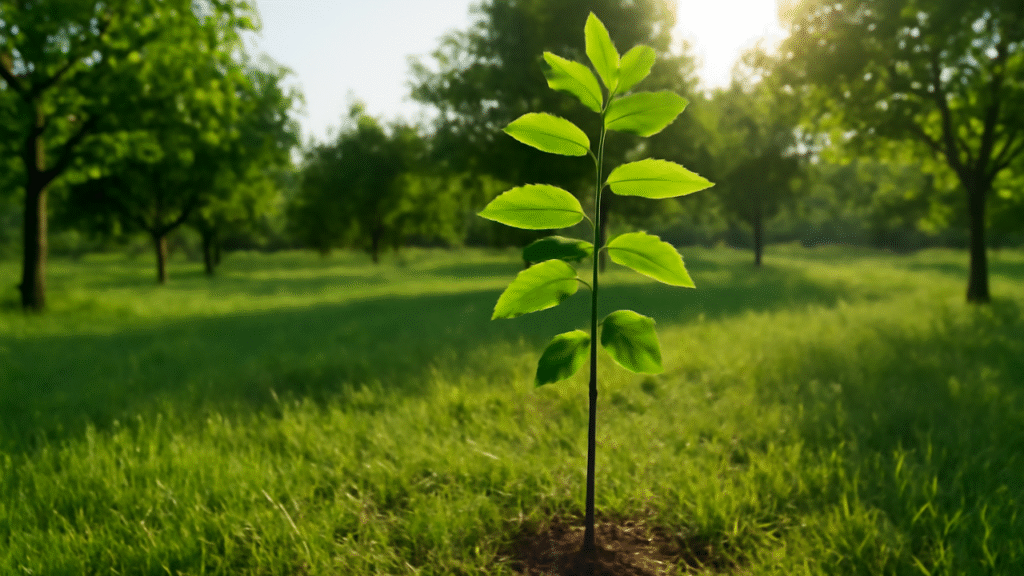
How to Grow Black Walnut Tree Seedlings: A Step-by-Step Guide for Beginners
Dreaming of a backyard that yields both beauty and bounty? Imagine harvesting your own nutritious nuts or crafting furniture from premium timber—all starting with a tiny seed! If you’re a beginner eager to grow black walnut tree seedlings, you’ve come to the right place. These majestic trees (Juglans nigra) are a fantastic investment for nut production, stunning landscapes, and even future profit. But let’s be honest—starting from seedlings can feel daunting with challenges like slow growth and tricky germination. Don’t worry! 😊 This step-by-step guide is here to simplify everything.
Whether you’re a novice gardener or a homesteader, we’ve got you covered with practical tips to ensure success. From sourcing seeds to nurturing young trees, you’ll learn how to overcome common hurdles and watch your black walnut tree seedlings thrive. Curious about transforming your yard into a legacy of shade and value? Keep scrolling—by the end of this guide, you’ll feel confident to plant, grow, and enjoy the rewards of these incredible trees for years to come!
Table of Contents
Toggle🌰 Understanding Black Walnut Tree Seedlings 🌰
Hey there, budding gardener! Before you dig into planting, let’s get to know black walnut tree seedlings a little better. Whether you’re aiming for tasty nuts, valuable timber, or a gorgeous yard, starting with the basics will set you up for success. This section breaks down what these seedlings are, why they’re worth growing, and what challenges to watch out for—all in simple terms to keep things easy and exciting! 😊

🌟 What Are Black Walnut Tree Seedlings? 🌟
Black walnut tree seedlings are just baby trees—either grown from seeds (those familiar walnuts!) or bought as small, young plants from a nursery. Starting from seedlings means you’re in control of their journey from the very beginning. Plus, it’s often cheaper than buying bigger saplings. Pretty cool, right? They’re the first step to growing Juglans nigra, a tree famous for its dark wood and delicious nuts. 🥜
💚 Benefits of Growing Black Walnuts from Seedlings 💚
Why choose black walnut tree seedlings? For starters, they’re a fantastic long-term investment! Here’s what you gain:
- Premium Timber: Their wood is top-notch for furniture and crafts, fetching high prices if you ever harvest it.
- Tasty Nuts: Packed with protein and omega-3s, walnuts are a healthy snack or a small side hustle if you sell them.
- Stunning Looks: These trees grow tall with wide, shady canopies—perfect for transforming your landscape into a relaxing haven. 🌳 Growing from seedlings lets you nurture them into something truly special for your home or farm.
⚠️ Challenges to Be Aware Of ⚠️
Now, let’s keep it real—growing black walnut tree seedlings isn’t always a walk in the park. They grow slowly, often taking 6-8 years to produce nuts, so patience is key. Their roots release a chemical called juglone, which can harm nearby plants like tomatoes or apples. And in the early stages, they need extra care to survive. But don’t worry! With the right know-how (which you’ll get in this guide), these hurdles are totally manageable. 💪
Stick with us, and you’ll feel confident about what black walnut tree seedlings bring to the table—and how to handle any bumps along the way. Ready to dive deeper? Let’s move on to preparing for success!
📋 Before You Start: Key Considerations for Success 📋
Alright, future black walnut grower! Before you get your hands dirty with black walnut tree seedlings, let’s make sure you’re set up for success. Rushing in without a plan can lead to frustration, so this section covers the must-know factors to consider. We’ll keep it simple and practical, ensuring you’ve got everything in place to help your seedlings thrive. Let’s dive into the essentials like climate, space, and soil—key steps to avoid common pitfalls! 😊
🌤️ Climate and Hardiness Zones 🌤️
First things first: can black walnut tree seedlings grow where you live? These trees do best in USDA Hardiness Zones 4-9, which cover much of the U.S., from chilly northern areas to milder southern regions. They can handle cold winters but don’t like late spring frosts that zap young buds. Not sure about your zone? Check the USDA Hardiness Zone Map online—it’s super easy! Pro tip: Chat with a local nursery to confirm if your area’s weather suits these trees. 🗺️

🏞️ Space Requirements 🏞️
Black walnut trees aren’t small fry! Mature trees can tower 50-75 feet high with a canopy spreading 50-60 feet wide. Their roots stretch far, too, and release juglone—a chemical that can harm nearby plants. So, give them room to grow! Plan to plant seedlings at least 50-60 feet away from buildings, gardens, or other trees. Got a small yard? You might need to rethink this project or stick to just one tree. Space is non-negotiable for healthy growth. 🌲
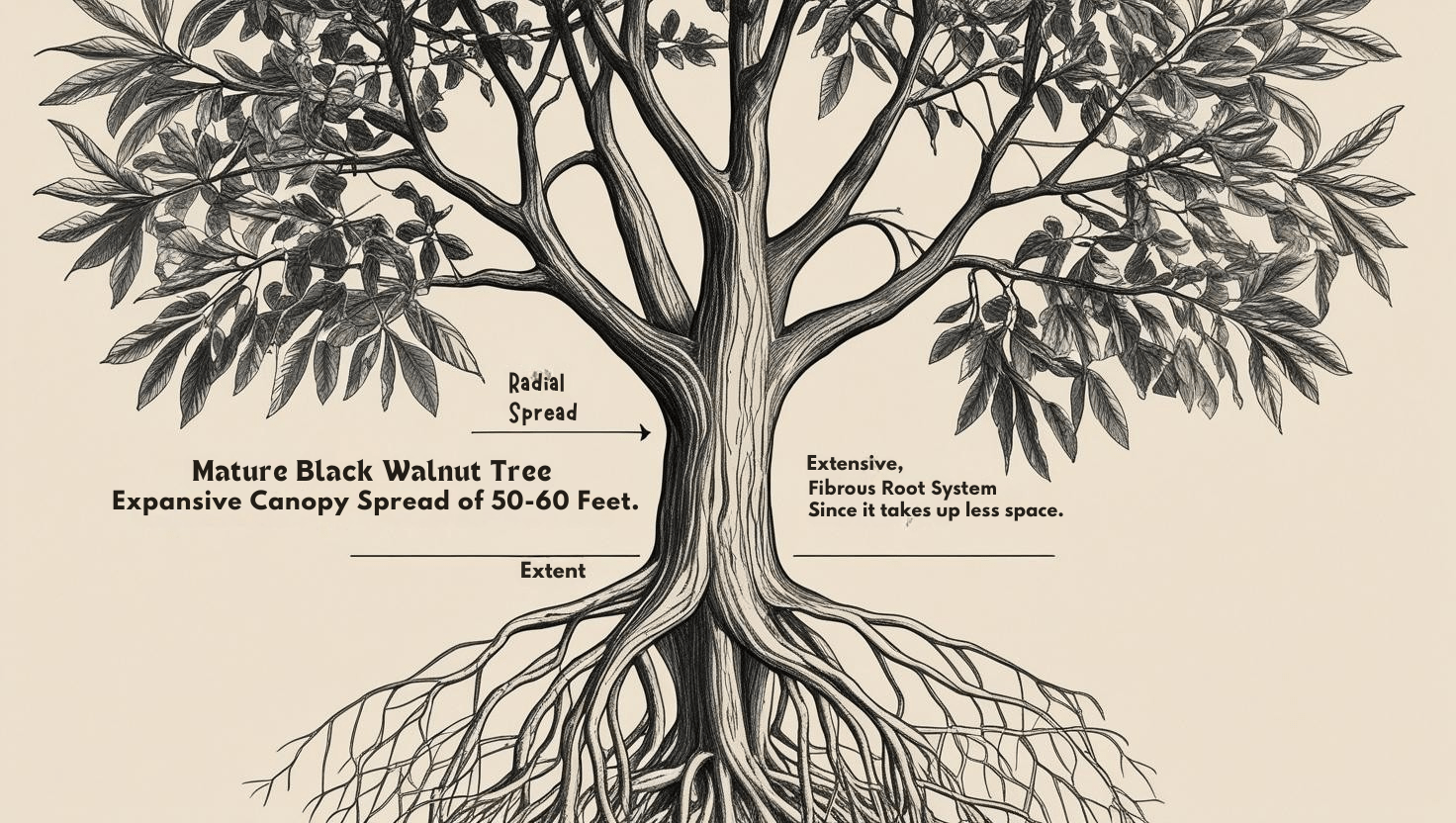
🌱 Soil and Site Selection 🌱
Let’s talk dirt! Black walnut tree seedlings love well-drained, loamy soil with a pH between 6.0 and 7.0—slightly acidic to neutral. They also crave full sun, meaning 6-8 hours of direct light daily for strong growth. Pick a spot away from soggy areas since too much water can rot their roots. Test your soil if you’re unsure (kits are cheap at garden stores), and avoid shady or flooded spots. A happy site means a happy seedling! ☀️

By nailing these considerations—climate, space, and soil—you’re already ahead of the game. Taking a moment to plan now saves headaches later. Ready to get planting? Let’s move on to the step-by-step guide for growing your black walnut tree seedlings!
🌱 Step-by-Step Guide to Growing Black Walnut Tree Seedlings 🌱
Hey there, green thumb! Now that you’ve got the basics down, it’s time to roll up your sleeves and start growing black walnut tree seedlings. This step-by-step guide is crafted just for beginners, breaking down the process into clear, doable actions. From getting seeds or seedlings to planting and early care, we’ve got every detail covered to help you succeed. Let’s turn your vision of towering walnut trees into reality—one easy step at a time! 😊
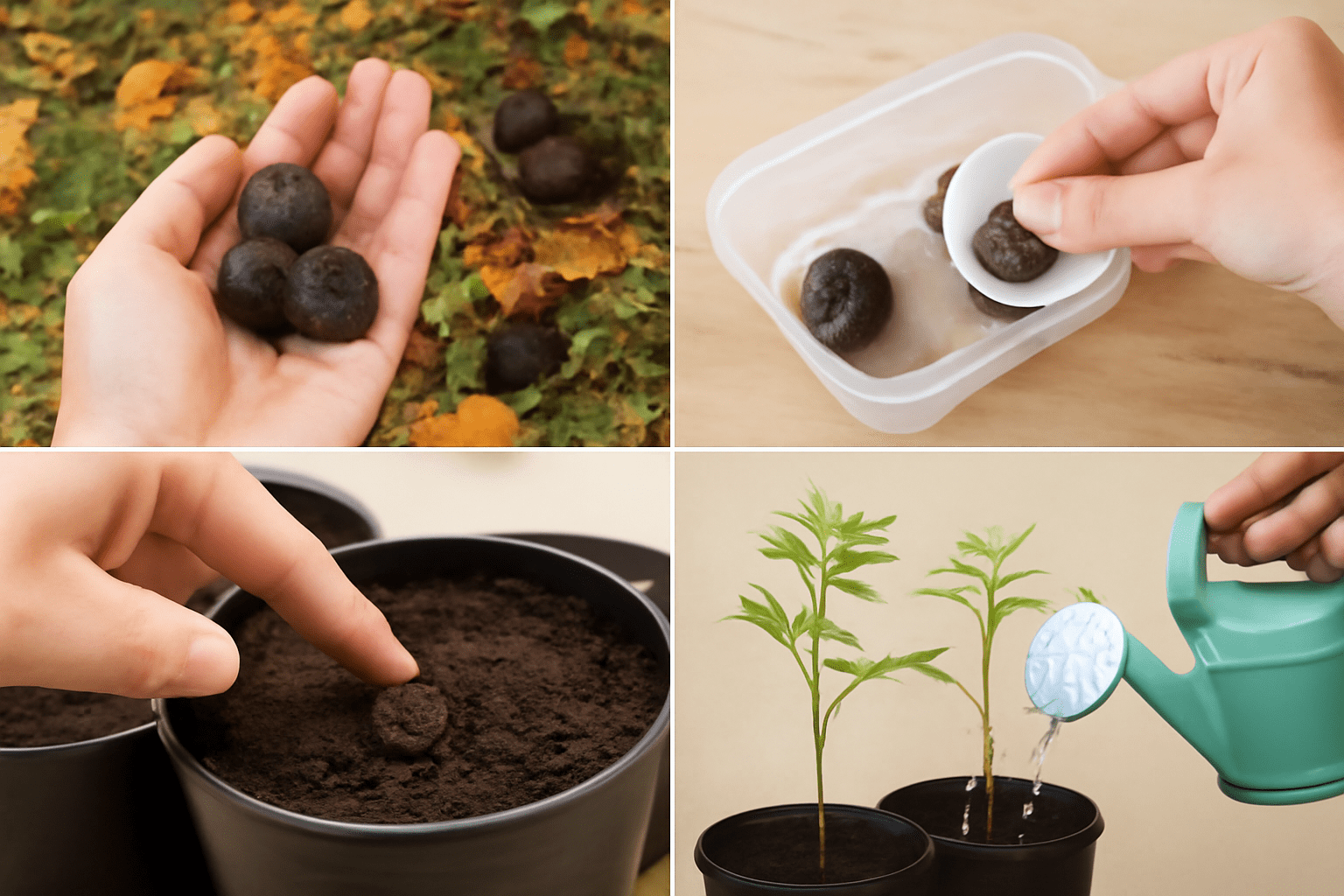
1️⃣ Step 1: Sourcing Black Walnut Seeds or Seedlings 1️⃣
Your journey starts with getting the right starting material. You’ve got two options: collect seeds (the actual walnuts) or buy young seedlings. If collecting, grab fresh nuts in the fall from healthy, local trees—local sources adapt better to your area. Wear gloves; the husks stain like crazy! Alternatively, purchase certified black walnut tree seedlings from a trusted nursery or online retailer like the Arbor Day Foundation. Either way, start with quality to boost your odds of success. 🥜
2️⃣ Step 2: Preparing Seeds for Germination (If Starting from Nuts) 2️⃣
Starting from seeds? You can’t just toss them in the ground—they need prep! First, remove the green husks (messy but necessary) and soak the nuts in water for 24 hours to soften the hard shell. Then, mimic winter by stratifying them: place the nuts in a moist medium (like damp sand or peat moss) in a sealed bag and store in the fridge for 90-120 days. This cold treatment is crucial—without it, germination often fails. Patience here pays off! ❄️
3️⃣ Step 3: Planting Your Seedlings or Seeds 3️⃣
Time to plant! The best windows are early spring after the last frost or fall if you’re in a warmer zone. For seeds, dig a hole 2-3 inches deep; for seedlings, make it twice as wide as the root ball and just as deep. Space them 50-60 feet apart—remember, they grow huge! Place the seed or seedling in, cover with soil, and add a thin layer of mulch to keep moisture in. Pick a sunny, well-drained spot to give them the best start. 🌞
4️⃣ Step 4: Watering and Initial Care 4️⃣
Your baby black walnut tree seedlings need TLC right after planting. Water deeply—about 1-2 inches per week—for the first 1-2 years to help roots settle in. Don’t let the soil dry out completely, but avoid soggy conditions that cause rot. If you’re in a windy area, stake young seedlings to keep them upright. And watch out for hungry critters like deer or rodents—tree guards or fencing can save the day. Your care now builds a strong foundation! 💧
There you have it—a straightforward roadmap to get your black walnut tree seedlings off to a great start! Follow these steps, and you’ll be well on your way to growing sturdy, healthy trees. Stick with us for the next section on long-term care to keep them thriving for years to come! 🌳
💧 Caring for Black Walnut Tree Seedlings Over Time 💧
Congrats on planting your black walnut tree seedlings! Now, the real journey begins—nurturing them into strong, towering trees. This section is your go-to guide for long-term care, packed with beginner-friendly tips to keep your seedlings healthy through the years. From watering to pest control, we’ll walk you through the essentials to ensure your trees grow tall and productive. Let’s dive into how to care for them with ease and confidence! 😊
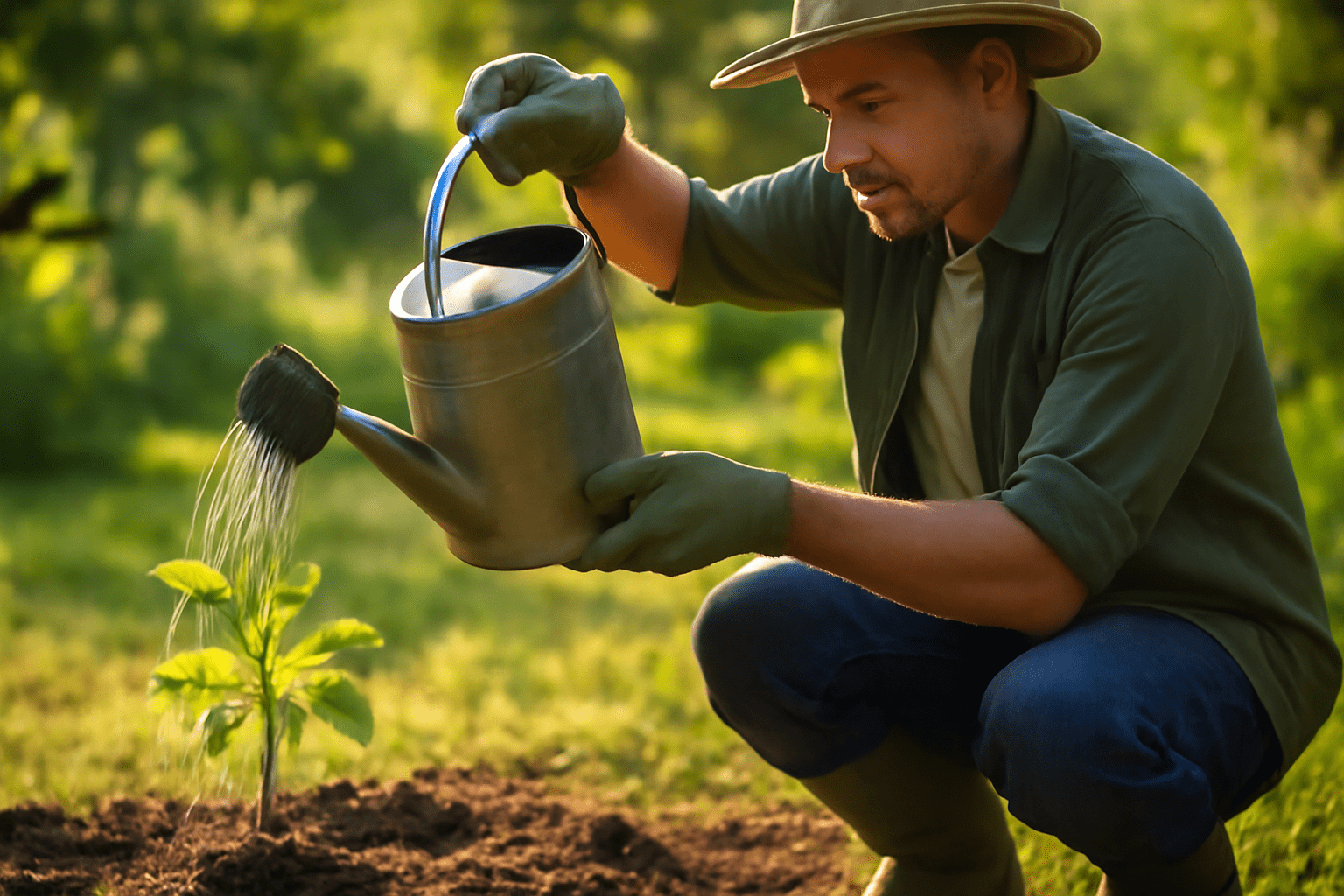
💦 Watering Needs as They Grow 💦
In the first 1-2 years, your black walnut tree seedlings need consistent moisture to establish roots. Aim for 1-2 inches of water per week, either from rain or manual watering, especially during dry spells. After they’re established (around year 3), they’re pretty drought-tolerant and often rely on natural rainfall. But if you notice drooping leaves in hot, dry weather, give them a deep soak. Overwatering can harm them, so always check if the soil feels dry a few inches down before adding more. 🪣
🌿 Fertilizing for Healthy Growth 🌿
Black walnut tree seedlings don’t need much fertilizer if your soil is decent, but a little boost can help in the early years. In spring, apply a balanced, slow-release fertilizer (like a 10-10-10 mix) around the base, following package instructions—don’t overdo it! If your soil test shows deficiencies (like low nitrogen), target those specific nutrients. Avoid fertilizing late in the season; it can spur growth that won’t survive winter. Healthy soil equals happy trees! 🌱
✂️ Pruning and Shaping Young Trees ✂️
Pruning isn’t just for looks—it’s vital for structure! In the first few years, trim dead, damaged, or crossing branches to encourage a strong central trunk. Do this in late winter or early spring when the tree is dormant to avoid stress. Use clean, sharp tools to prevent disease, and don’t remove more than 25% of the branches at once. As they grow, keep an eye on low limbs if you want a taller trunk for timber. A little snip now shapes a mighty tree later! 🪚
🐛 Protecting Against Pests and Diseases 🐛
Black walnut tree seedlings can attract troublemakers like walnut caterpillars, aphids, or fungal issues like anthracnose. Check leaves regularly for spots, holes, or sticky residue. If you spot pests, a gentle insecticidal soap or neem oil often does the trick for small infestations. For diseases, ensure good air circulation by spacing trees properly and cleaning up fallen leaves. Deer and rodents love young bark too—use tree guards or fencing to keep them at bay. Stay vigilant! 🛡️
⚠️ Managing Juglone Toxicity Around Your Trees ⚠️
Remember juglone, that chemical black walnut roots release? It can stunt or kill nearby plants like tomatoes, potatoes, or azaleas. Keep sensitive crops or flowers at least 50-60 feet away from your trees (or even farther as they mature). Opt for juglone-tolerant plants like grasses, daylilies, or beans if you’re landscaping nearby. Planning your garden layout with this in mind prevents headaches down the road. 🌻
By sticking to these care tips—watering wisely, fertilizing lightly, pruning smartly, protecting from pests, and managing juglone—you’ll help your black walnut tree seedlings flourish over time. Keep at it, and soon you’ll have a sturdy tree ready to shade your yard or yield nuts! Up next, let’s tackle common problems and how to solve them! 🌳
⚠️ Common Challenges and Solutions When Growing Black Walnut Seedlings ⚠️
Hey there, walnut grower! Even with the best care, growing black walnut tree seedlings can come with a few bumps along the road. Don’t worry—this section is here to help you spot common issues and fix them fast. We’ve broken down the most frequent challenges beginners face, from slow growth to pesky critters, with simple, practical solutions. Let’s troubleshoot together so your seedlings stay on track to become thriving trees! 😊
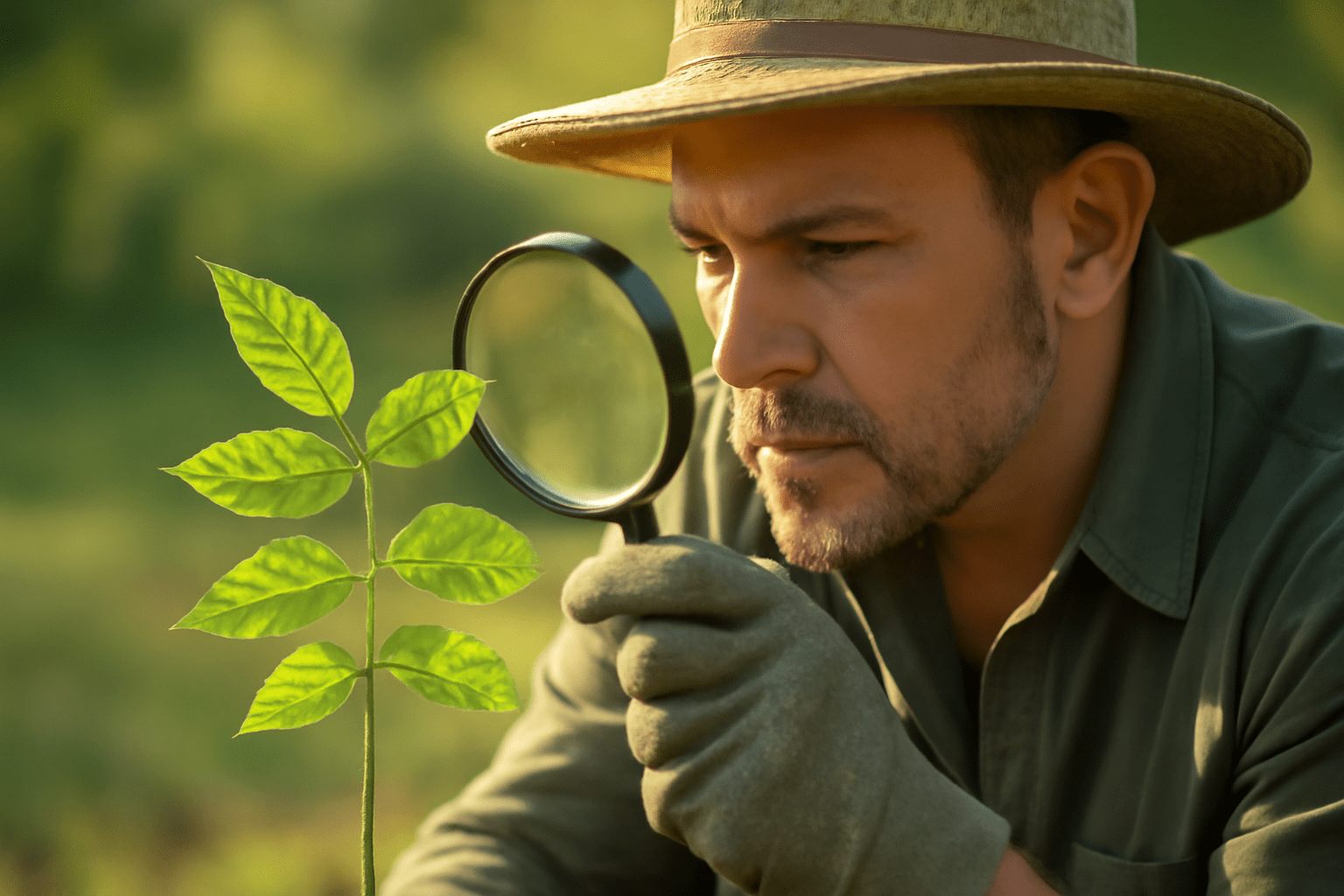
🐌 Problem 1: Slow Growth or Failure to Thrive 🐌
Challenge: Your black walnut tree seedlings seem stuck—barely growing or looking weak even after months.
Cause: This could be due to poor soil, insufficient sunlight, or improper watering. These trees need the right conditions to kickstart growth.
Solution: Double-check their spot—ensure they’re getting 6-8 hours of direct sun daily. Test your soil; if it’s too compact or nutrient-poor, mix in compost to improve drainage and fertility. Water consistently (1-2 inches per week) in the first couple of years, but don’t let the roots sit in soggy soil. Patience is key; they’re naturally slow growers! 🌞
💧 Problem 2: Yellowing Leaves or Wilting 💧
Challenge: Leaves on your seedlings turn yellow or droop, making them look sickly.
Cause: Overwatering, underwatering, or nutrient deficiencies (like lack of nitrogen) are often to blame. Poor drainage can also stress roots.
Solution: Check soil moisture—stick your finger 2-3 inches down. If it’s soggy, cut back on watering and ensure the site drains well. If dry, give a deep soak. Apply a balanced fertilizer in spring if leaves stay yellow, following label directions. If the problem persists, inspect for root rot (mushy roots) and replant in better-drained soil if needed. 🪴
🐿️ Problem 3: Damage from Animals 🐿️
Challenge: Deer, rabbits, or rodents are munching on bark, leaves, or even digging up seeds.
Cause: Young black walnut tree seedlings are a tasty snack for wildlife, especially in rural areas.
Solution: Protect your seedlings with physical barriers. Wrap trunks with tree guards or plastic tubing to shield bark. Use fencing (at least 4 feet high) to keep deer out. For smaller critters, bury hardware cloth around seeds or bases to deter digging. Repellents like cayenne pepper spray can help too, but reapply after rain. Stay proactive! 🛡️
🐛 Problem 4: Pests and Diseases 🐛
Challenge: You notice holes in leaves, sticky sap, or dark spots—signs of pests like caterpillars or diseases like anthracnose.
Cause: Walnut caterpillars, aphids, or fungal infections thrive in humid conditions or on stressed trees.
Solution: Inspect regularly. For pests, pick off small numbers by hand or use insecticidal soap/neem oil for larger infestations. For fungal issues, prune affected areas and dispose of debris to stop spread—don’t compost it! Improve air circulation by spacing trees well. If it’s severe, consult a local extension service for targeted treatments. 🔍
☠️ Problem 5: Juglone Toxicity Affecting Nearby Plants ☠️
Challenge: Plants near your black walnut tree seedlings are wilting or dying for no obvious reason.
Cause: Juglone, a chemical from walnut roots, is toxic to many species like tomatoes, apples, or rhododendrons.
Solution: Keep sensitive plants at least 50-60 feet away (farther as trees grow). Research juglone-tolerant options like grasses, hostas, or black raspberries for nearby planting. Raised beds with barriers can isolate gardens from juglone in the soil. Planning ahead avoids this sneaky issue! 🌿
Facing these challenges head-on with these fixes will keep your black walnut tree seedlings healthy and growing strong. Remember, every problem has a solution, and a little attention goes a long way. Ready for the final stretch? Let’s wrap up with when and how to harvest the rewards of your hard work! 🌳
🌲 Tips for Long-Term Success with Black Walnut Trees 🌲
Congratulations, walnut enthusiast! You’ve planted and cared for your black walnut tree seedlings, and now it’s time to think about the long haul. This section is packed with practical, beginner-friendly tips to ensure your trees not only survive but thrive for decades. From maintenance tricks to maximizing their benefits, we’ll guide you through sustaining healthy, productive black walnut trees. Let’s set you up for years of shade, nuts, and maybe even timber! 😊
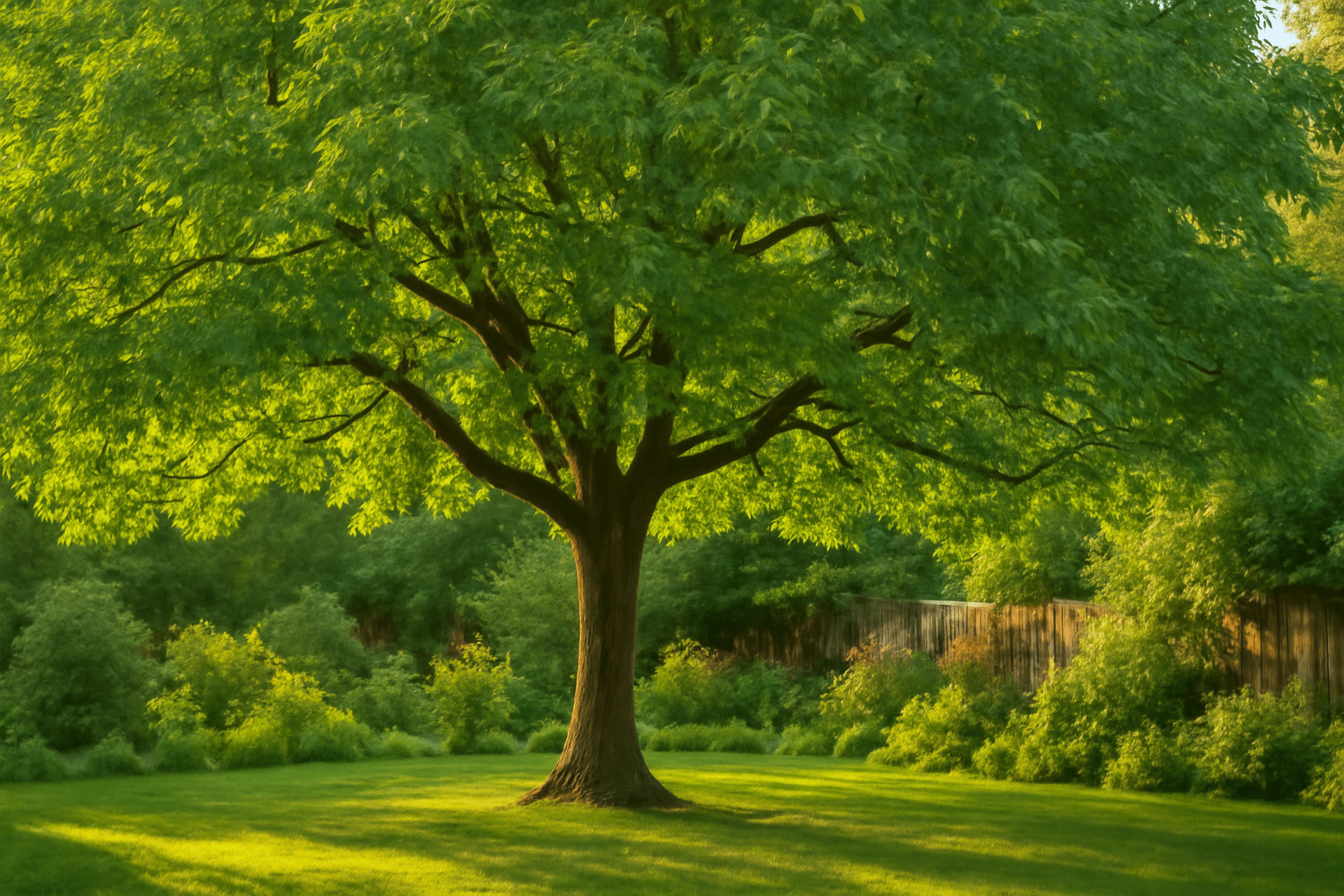
📅 Establish a Maintenance Routine 📅
Consistency is your best friend for long-term success. Create a simple yearly checklist: inspect for pests and diseases in spring, prune dead or damaged branches in late winter, and monitor soil moisture during dry summers (even mature trees appreciate a deep watering in droughts). Mulch around the base annually with 2-3 inches of organic material like wood chips to retain moisture and suppress weeds—just keep it a few inches from the trunk to avoid rot. A little routine care prevents big problems! 🕰️
🌰 Harvesting Nuts Efficiently 🌰
Black walnuts are a tasty bonus, but harvesting can be messy! Nuts typically ripen in late summer to early fall (September-October), falling in their green husks. Wear gloves—husks stain everything! Collect them promptly to avoid mold or critter theft. Remove husks by rolling them underfoot on a hard surface or soaking in water for a day to soften. Dry the nuts in a single layer in a cool, airy spot for 2-3 weeks before cracking. Pro tip: a heavy-duty nutcracker helps with their tough shells! 🥜
🪵 Understanding Timber Value 🪵
Black walnut wood is prized for furniture and flooring, often fetching high prices if grown straight and tall. If timber is your goal, focus on pruning lower branches early to create a long, clear trunk (aim for at least 8-10 feet of branch-free height). It takes 30-50 years for harvestable timber, so this is a long-term investment. Consult a local forester before cutting to assess value and ensure sustainable practices. Quality care now can mean big returns later! 🪓
🌳 Companion Planting with Juglone in Mind 🌳
Juglone toxicity doesn’t mean you can’t plant near your black walnut trees—it just requires smart choices. Opt for juglone-tolerant species like Kentucky bluegrass, daylilies, ferns, or black raspberries within 50-60 feet of the tree. Avoid sensitive plants like potatoes, blueberries, or lilacs. As the tree matures, its root zone expands, so plan garden layouts with future growth in mind. Researching compatible plants keeps your yard thriving! 🌻
🌍 Environmental Benefits and Stewardship 🌍
Your black walnut trees do more than look pretty—they’re eco-warriors! They provide shade, reduce soil erosion with deep roots, and offer habitat for birds and small wildlife. To maximize benefits, avoid over-clearing around them; let natural undergrowth support local biodiversity. If you’re near waterways, their roots help filter runoff, protecting streams. Be a good steward—consider planting more native trees to enhance your local ecosystem. Every tree counts! 🌿
By following these tips—sticking to a maintenance plan, harvesting nuts smartly, planning for timber, choosing the right companions, and embracing environmental perks—you’re ensuring your black walnut trees remain a valuable asset for generations. You’ve got this! Let’s wrap up with a quick summary and some final encouragement to keep growing! 🌳
🌳 Final Thoughts 🌳
And there you have it, budding arborist! You’ve journeyed through the essentials of growing black walnut trees—from planting tiny seedlings to nurturing them into mighty giants. We’ve covered sourcing seeds, germination, planting, ongoing care, troubleshooting challenges, and tips for long-term success. Each step is a building block toward a rewarding payoff, whether it’s the shade of a sprawling canopy, a harvest of rich nuts, or the potential of valuable timber. 😊
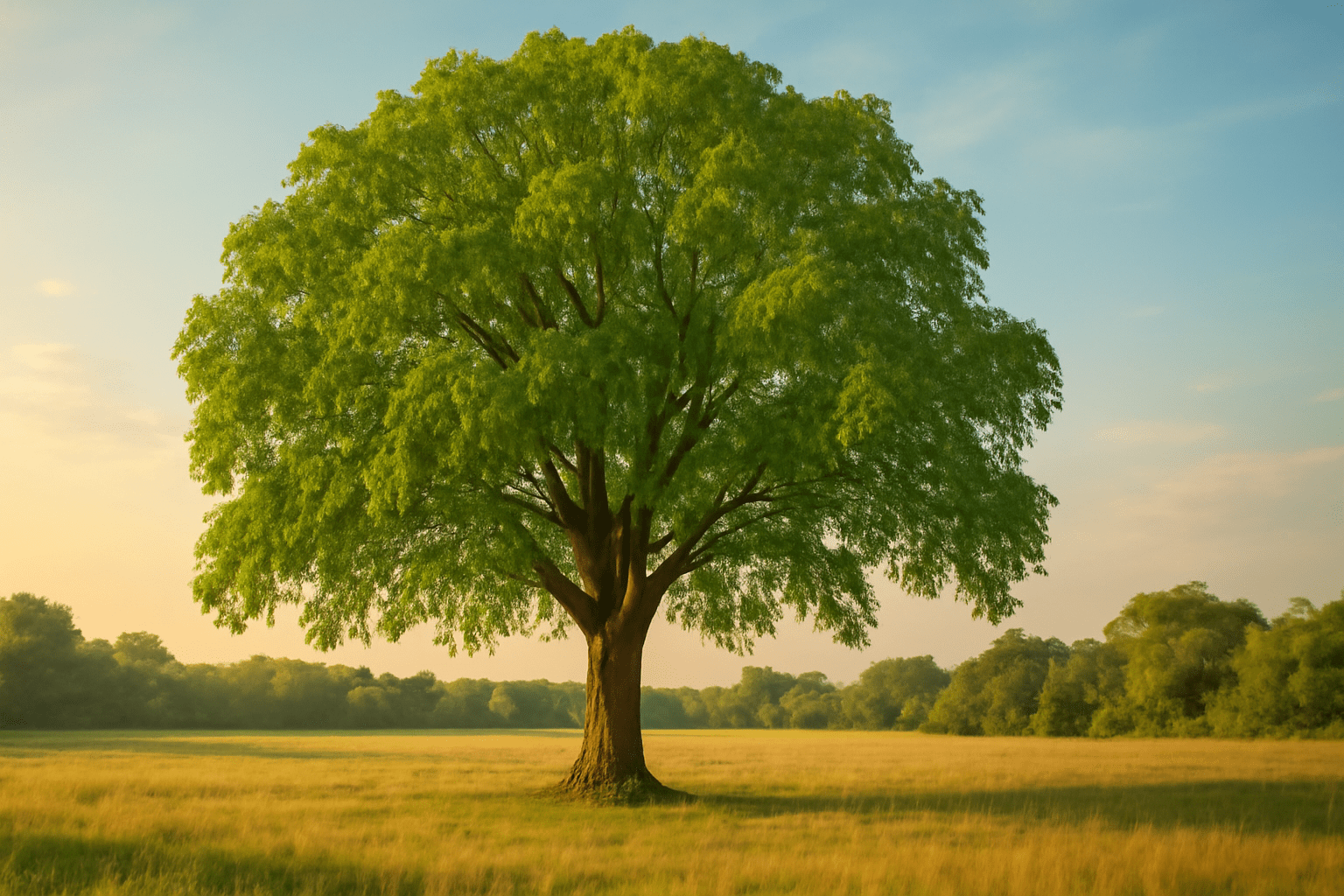
Growing black walnut trees isn’t just about the end result; it’s about the patience and care you pour into the process. These trees can live for over a century, becoming a legacy for your family or community. Remember, every towering walnut started as a humble seedling, just like the ones you’re tending now. Mistakes might happen, but each one teaches you something new. Keep learning, stay consistent, and don’t hesitate to reach out to local gardening groups or extension services for support.
So, keep those hands dirty and your spirits high! Watch your black walnut trees grow year by year, knowing you’re contributing to nature’s beauty and bounty. You’ve got the tools and know-how—now go grow a masterpiece! 🌿 Thank you for following along, and happy planting! 🌲
Frequently Asked Questions (FAQ)
How do I start growing black walnut tree seedlings?
To start growing black walnut seedlings, collect fresh seeds (nuts) in the fall. Remove the outer husk and soak them in water for 24-48 hours. Then, cold-stratify the seeds by placing them in a moist medium in the fridge for 2-3 months before planting them in well-drained soil.
What soil is best for black walnut seedlings?
Black walnut seedlings prefer slightly acidic, well-drained soil with a pH of 6.0 to 7.0. Make sure the soil is rich in organic matter to support healthy root growth. Avoid heavy clay or compacted soils, as they can restrict root development.
When is the best time to plant black walnut seeds?
The best time to plant black walnut seeds is in early spring, once the last frost has passed. If you’ve stratified your seeds, plant them in well-prepared soil after the cold period. Alternatively, you can also plant seeds in the fall after they’ve been collected, allowing them to naturally go through cold stratification over the winter.
How deep should I plant black walnut seeds?
Plant black walnut seeds about 1-2 inches deep in the soil. Make sure the soil is loose enough for the roots to grow easily. After planting, water thoroughly, but don’t saturate the soil, as overly wet conditions can cause rot.
How long does it take for black walnut seedlings to sprout?
Black walnut seedlings typically take 4-6 weeks to sprout after planting. However, it can take longer if the seeds are planted in cooler or less favorable conditions. Be patient, and keep the soil consistently moist but not waterlogged.
How do I care for black walnut seedlings after they sprout?
Once black walnut seedlings sprout, ensure they get plenty of sunlight, ideally 6-8 hours per day. Water them regularly, but let the soil dry out between watering to avoid root rot. Fertilize the seedlings lightly with a balanced fertilizer during the growing season to encourage healthy growth.
What are common issues when growing black walnut seedlings?
Common issues with black walnut seedlings include poor germination, seedling diseases, and pests like aphids or walnut husk flies. To prevent these, ensure your seedlings have good airflow, avoid over-watering, and consider using organic pest control methods if necessary.
Can I grow black walnut trees in small spaces or containers?
Black walnut trees are large and require significant space to grow, so they’re not ideal for small spaces or containers. They need room for their expansive root system and canopy. If space is limited, consider planting smaller, more compact varieties instead.
